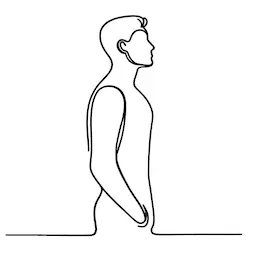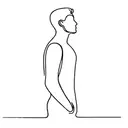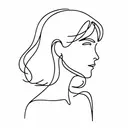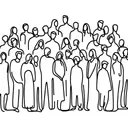
How to draw ...
a person
a person is the 6th most searched thing that people want to draw and here is how it compares to other things in People > Humans.
But do people always want to draw a person?
Interest over time on "how to draw a person" in the U.S.
Cycle
Repeated decrease in search volume every June to August, likely due to lower search activity during summer months.
And how does it compare to the most popular things to draw among Humans?
Interest over time on "how to draw a person" comparing to top 3 in Humans category
data from Ahrefs Keyword ExplorerWhich countries are most interested in drawing a person?
| United States | 🇺🇸 | 5,100 | |
| India | 🇮🇳 | 2,600 | |
| United Kingdom | 🇬🇧 | 800 | |
| Canada | 🇨🇦 | 400 | |
| Australia | 🇦🇺 | 300 |
How to draw a person step-by-step
Capturing the essence of a person through drawing involves mastering proportion, anatomy, and expression. Key challenges include accurately representing the human form and conveying emotion through facial features and body language. Strategies to overcome these challenges include studying human anatomy, practicing gesture drawing to understand movement, and observing diverse models to appreciate unique characteristics. Emphasizing light and shadow can enhance the three-dimensionality and depth of the portrait.
Here are the steps to drawing a person:
- Choose Paper and Pencil: Select a piece of paper and a pencil for sketching. Use a pencil with an eraser for easy corrections.
- Sketch the Basic Structure: Start with simple shapes to outline the person’s structure. Draw an oval for the head, rectangles for the torso, and lines for the limbs.
- Refine The Head and Face Shape: Develop the oval into a proper head shape. Sketch a vertical line down the middle and a horizontal line across for facial symmetry. Add basic lines for eyes, nose, and mouth placement.
- Outline the Torso and Limbs: Add circles or curves at joints like shoulders, elbows, hips, and knees for accurate positioning. Connect these with lines or simple shapes, creating a rough body outline.
- Detail the Face: Add features such as eyes, eyebrows, nose, and mouth. Pay attention to proportions and alignment, and add details like hair and ears.
- Define the Body Shape: Flesh out the outline with more details, adding curves for muscles and contours where needed. Incorporate clothing outlines to define the attire.
- Refine and Add Details: Refine the fingers, shoes, and clothing, adding any accessories. Focus on textures, folds, and the natural flow of garments.
- Add Depth with Shading: Use the pencil to add shading and depth, highlighting where light would naturally hit and creating shadows for dimension.
- Review and Erase Guides: Examine the drawing overall, making any final adjustments for symmetry and proportion. Erase guidelines and any unwanted marks.
Common mistakes
- Proportions: A common mistake is misjudging the proportions of the human body, such as making the head too large or the arms too short, which results in an unbalanced and unrealistic figure.
- Positioning: Many artists struggle with posing the figure naturally, often leading to awkward or stiff postures, as they might not fully understand the underlying anatomy or the way joints articulate.
- Symmetry: Beginner artists often make the mistake of drawing faces or body parts too symmetrically, ignoring the natural asymmetry found in human features, which can make the drawing appear artificial or lifeless.


